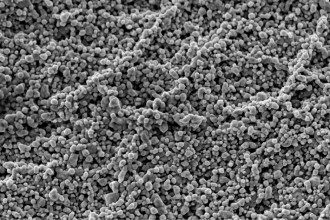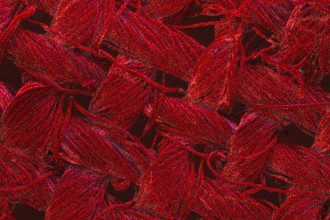22nd July 2016
Contributing writer for Wake Up World
Standard methods of laundering clothing are rife with environmental problems, such as excessive water and electricity usage, as well as significant pollution. So when researchers develop innovative new fabrics that resist stains and soil — or do away with the need to launder altogether — it really does seem as if technology can rescue us from many of the ecological problems we face today. And yet, there’s usually a hidden drawback for every technological leap. In the case of futuristic and self-cleaning fabrics, a range of health and environmental consequences come into play.
The problem with modern laundry practices
Even with notable advancements in clothes washers and dryers, there’s still much to be desired in terms of wastefulness. A new, high-efficiency washer uses about 12 gallons of water per load and 25% less electricity than standard models. Older top-loading machines can require up to 45 gallons of water, whereas newer models use around 27 gallons. About 90% of total energy usage for any kind of washer is due to heating the water. However, the biggest energy drain comes not from a washing machine, but the dryer.
[pro_ad_display_adzone id=”110028″]
According to Grist, the appliance has made little improvement in energy efficiency, to the point where “even a new one can consume as much electricity as an efficient new clothes washer, refrigerator, and dishwasher combined.” In the United States we spend $9 billion a year on electricity used to dry our clothes. If Americans embraced the best models available in Europe, Australia and Asia, the cost would drop to $5 billion. Even in the best case scenario, that’s still a massive amount of energy. Not to mention commercial laundry detergents contain a slew of toxic chemicals that endanger human, aquatic and environmental health. Which is where fabric technology comes in with the promise of reducing — or downright eliminating — the need to wash our clothes.
Technological breakthroughs with futuristic fabric
Imagine a day when, instead of washing clothes with water and detergent, we simply expose our laundry to sunshine or a lightbulb — and enjoy thoroughly clean clothing from the process. We may be closer to this reality than you think.
Researchers at RMIT University in Australia have developed a fabric woven with nanostructures of silver and copper that release a burst of energy when exposed to light, which in turn degrades organic matter like stains and grime. The team hopes to expand on their development by creating antibacterial textiles that would destroy superbugs.
Says lead researcher Dr. Rajesh Ramanthan:
“Because the nanostructure is metal-based they can absorb visible light, what that does is it basically excites the metal nanoparticles which are present on the surface. And because of this energy, it’s able to degrade organic matter which is present on it so that’s how it’ll get rid of stains.”
To date, only consumer-related products, like wine or food stains, have been tested. Moreover, the researchers found that the copper coating finished its reaction in three minutes when exposed to visible light, the silver coating in 30. However, after 15 cycles of removing organic matter with light, the silver coated fabric was more resilient and performed better.

Close-up of the nanostructures grown on cotton textiles. Image magnified 150,000 times. (Image © RMIT University)
All the same, it’s important to note that high levels of copper in the body is associated with various nervous system dysfunctions — depression, suicidal thoughts, anxiety, violence, obsessive-compulsive disorder, bipolar disorder, phobias, Tourette’s syndrome and schizophrenia. The metal has also been linked to epilepsy, ADD/ADHD, autism and developmental delays. It remains to be seen whether the nanostructures of copper present within the fabric could be absorbed through the skin, but it’s an important consideration.
Another advance in fabric self-cleaning capabilities is coating cotton shirts with titanium oxide particles (N-TiO2). Similar to the copper and silver fabric, when exposed to light, stains dissolve. Robert Gonzales explains in i09:
“By coating their fabric with nanoparticles made from this new N-TiO2, the researchers have created a fabric that self-cleans in the presence of a very broad spectrum of light. What’s more, they found that further dispersing additional silver iodide nanoparticles in the fabric accelerated the N-TiO2‘s stain-fighting properties.”
[pro_ad_display_adzone id=”110030″]
Unfortunately, there’s a major issue with this technology. Simply put: brain and kidney damage. Researchers at Indiana University-Purdue University Indianapolis discovered that carbon nanoparticles where able to pass into kidney cells. The team found this to be particularly troubling because “The human body needs intact barriers, whether it be skin, airway linings, gut walls or the kidney cells we looked at in this study. We need to gain a better understanding of how CNPs modify and change characteristics of barriers as these tiny particles become more common in the air we breathe.”
Titanium dioxide nanoparticles also present serious health risks. Scientists at the University of Plymouth found N-TiO2 caused brain damage in rainbow trout. One researcher feels this damage is comparable to what happens with mercury poisoning, “which suggests that accumulation of the particles could have some damaging long term effects to wildlife and possibly people as well.” And a study at UCLA found that N-TiO2 caused DNA damage and inflammation in test animals.
This is worrisome, especially since fabric manufacturers aren’t the only industry utilizing the technology — nanoparticles are found in everything from cosmetics and sunscreen, to paint and vitamins — even medical procedures. Once within the body, N-TiO2 permanently accumulates in tissues and organs since the body is unable to eliminate the particles.
Alternatives to High-Tech Fabric
Needless to say, the jury is still out regarding the safety of these fabrics. In the meantime, we can choose natural materials like cotton, wool and hemp for our clothing — and take active measures to reduce our environmental impact by adopting eco-friendly laundering methods. Here’s a few ideas to get you started:
• Skip the washing machine altogether and use a “Breathing Hand Washer“, galvanized washboard, or pressurized “Wonder Wash.” Use cold water to further save on electricity.
• A high velocity spin dryer will remove more water from clothing than a traditional washer’s spin cycle in only three minutes — a perfect compliment to a drying rack or clothes line.
• Finally, ditch standard laundry detergents like Tide, Gain, Wisk, etc. and opt for green products. Better yet, make your own.
Article sources
- www.onlinelibrary.wiley.com/doi/10.1002/admi.201500632/abstract
- www.tandfonline.com/doi/abs/10.3109/17435390.2010.514076
- www.abc.net.au/news/2016-03-23/nanotechnology-self-cleaning-clothes-are-on-the-way-researchers/7268780
- www.forbes.com/sites/alexknapp/2011/12/15/nanotechnology-may-lead-to-the-end-of-laundry/#6d8321837950
- www.grist.org/news/in-the-future-you-may-never-have-to-do-laundry-again
- www.forbes.com/sites/alexknapp/2011/09/20/nanoparticles-may-cause-kidney-and-brain-damage/#744d38085f9f
- www.sciencemag.org/news/sifter/fabric-cleans-itself-light-could-one-day-eliminate-laundry
- www.popsci.com/nanoparticle-coated-textiles-just-need-little-sun-to-clean-themselves?dom=rss-default&src=syn
- www.phys.org/news/2009-11-nanoparticles-common-household-items-genetic.html
- www.drlwilson.com/articles/copper_toxicity_syndrome.htm
About the author:
 Carolanne Wright enthusiastically believes if we want to see change in the world, we need to be the change. As a nutritionist, natural foods chef and wellness coach, Carolanne has encouraged others to embrace a healthy lifestyle of organic living, gratefulness and joyful orientation for over 13 years.
Carolanne Wright enthusiastically believes if we want to see change in the world, we need to be the change. As a nutritionist, natural foods chef and wellness coach, Carolanne has encouraged others to embrace a healthy lifestyle of organic living, gratefulness and joyful orientation for over 13 years.
Through her website Thrive-Living.net, she looks forward to connecting with other like-minded people from around the world who share a similar vision. You can also follow Carolanne on Facebook, Twitter and Pinterest.
Further reading from Carolanne Wright:
- The Most Eco-Friendly Nation on the Planet is Now Carbon Negative
- Plastic Waste in the Ocean Will Outnumber Fish by 2050
- Mind Control, Subliminal Messages and the Brainwashing of America
- Monsanto Charged with Crimes Against Nature and Humanity – Set to Stand Trial in 2016
- Plastic-Eating Mushroom Discovered in the Amazon Rainforest — A Solution for Our Trash Saturated World?
- Over 100 Scientific Studies Agree: Cannabis Annihilates Cancer
- Why Every Parent Should Consider Unschooling
- First U.S. City Produces More Electricity Than It Uses — With 100% Renewable Technology
- If You Care About Animals and the Earth, Here’s Why You Need to Boycott Palm Oil Immediately
- Basic Income Guarantee: A Surprisingly Cost-Effective Method for Eliminating Poverty
[pro_ad_display_adzone id=”110027″]








